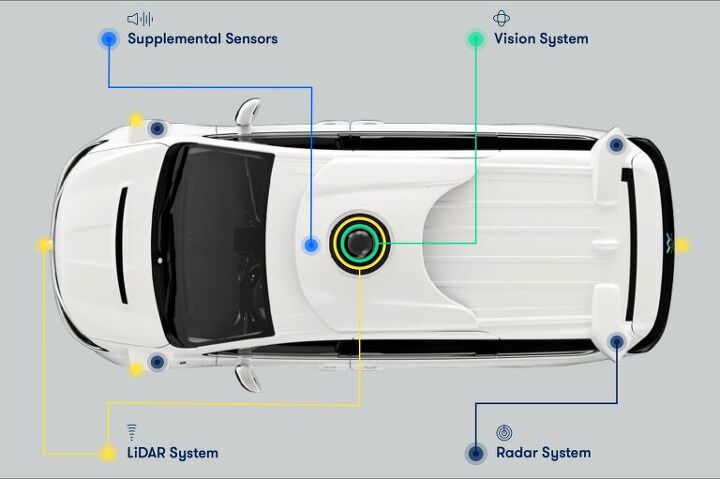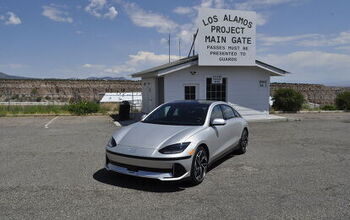Waymo Drops Comprehensive Self-Driving Safety Assessment, Tries to Educate Public

Autonomous cars have the unique capability to captivate the public’s imagination while simultaneously making them feel uneasy after considering things on a more practical level. A handful of self-driving related accidents, inconsistent development timetables, and a hands-off regulation strategy haven’t helped. But there is a sense that if the populace had a better handle on what went into making the technology work safely, some of their fears would be put to rest.
This week, Waymo — the relatively quiet autonomous vehicle arm of Alphabet Inc. — made an attempt to do just that. While also making a case for itself and the need for self-driving cars, the company released a 42-page outline of how its autonomous systems function. Written without a lot of technical jargon, the reading remains comprehensive and is one of the best attempts we’ve seen from a company to educate the public — rather than dazzle them with lofty promises.
Waymo has been on a bit of a safety kick this month. Taking into account that there is a good portion of the population that still feels anxious about self-driving cars, its new campaign is single minded in its goal to highlight safety and understanding. It’s probably some of the least duplicitous marketing we’ve ever seen and it serves not only to help Waymo, but any manufacturer hoping to sell autonomous vehicles in the years to come.
Don’t be fooled, though. These are still advertisements for the company. They just happen to be some of the most informative advertisements you’re likely to come across.
The safety report, which is available for perusal, splits Waymo’s definition of autonomous safety into five categories. It then explains how the tech firm addresses each one. The report cover everything from how the car makes driving decisions to ensuring there are adequate backups and technological redundancies to ensure a system failure won’t result in a crash.
Equally important, the report details the company’s existing sensor system — explaining what each lump of hardware is responsible for. It also gives a shorthand play-by-play of how its vehicles go about accomplishing a task and how the environment influences decisions.
While it may be a bit basic for experts, the document does provide a more inclusive look into autonomous technology and the company’s specific approach to it. Of course, that was always the point. Waymo is taking a very specific marketing path and, despite being a little dry, it’s likely the only way to truly ease consumer fretting. Getting into its extensive testing, validation processes, and various partnerships with advocacy groups like Mothers Against Drunk Driving and The National Safety Council wasn’t necessary. But it plants the seed into your brain that Waymo is doing more, doing it smarter, and doing it safer than its competition.
Whether or not that is the case, the company is offering transparency and an opportunity for the public to understand the technology better. That, in itself, ought to serve it well.
“Education begins with awareness, so we’re beginning this campaign with a series of digital and outdoor advertising campaigns in Arizona,” Waymo CEO John Krafcik said in a statement earlier this week. “Our hope is to grow this conversation into a national dialogue and provide opportunities for people to get up close with this technology.”
Waymo’s educational campaign is anticipated to coincide with the launch its first commercial ride-hailing service. Expected later this fall, the company’s self-driving Chrysler Pacifica minivans will engage in a testbed ride-haling service. However, Arizonians should be able to ride in one at the aforementioned outdoor events free of charge.
[Images: Waymo]

A staunch consumer advocate tracking industry trends and regulation. Before joining TTAC, Matt spent a decade working for marketing and research firms based in NYC. Clients included several of the world’s largest automakers, global tire brands, and aftermarket part suppliers. Dissatisfied with the corporate world and resentful of having to wear suits everyday, he pivoted to writing about cars. Since then, that man has become an ardent supporter of the right-to-repair movement, been interviewed on the auto industry by national radio broadcasts, driven more rental cars than anyone ever should, participated in amateur rallying events, and received the requisite minimum training as sanctioned by the SCCA. Handy with a wrench, Matt grew up surrounded by Detroit auto workers and managed to get a pizza delivery job before he was legally eligible. He later found himself driving box trucks through Manhattan, guaranteeing future sympathy for actual truckers. He continues to conduct research pertaining to the automotive sector as an independent contractor and has since moved back to his native Michigan, closer to where the cars are born. A contrarian, Matt claims to prefer understeer — stating that front and all-wheel drive vehicles cater best to his driving style.
More by Matt Posky
Latest Car Reviews
Read moreLatest Product Reviews
Read moreRecent Comments
- Flashindapan I always thought these look nice. I was working at a Land Rover dealership at the time the LR3 came out and we were all impressed how much better it was then the Discovery in just about every measurable way.
- Bd2 If I were going to spend $ on a ticking time bomb, it wouldn't be for an LR4 (the least interesting of Land Rovers).
- Spectator Wild to me the US sent like $100B overseas for other peoples wars while we clammer over .1% of that money being used to promote EVs in our country.
- Spectator got a pic of that 27 inch screen? That sounds massive!
- MaintenanceCosts "And with ANY car, always budget for maintenance."The question is whether you have to budget a thousand bucks (or euro) a year, or a quarter of your income.





































Comments
Join the conversation
I'm not anxious about fully automated cars. I just see no evidence that such a thing can be done in my lifetime. 90% automated? Sure. But that last ten percent is always the part that gets you Driving around dry well marked streets in the daytime is comparatively easy. Get back to me when you've got something that can do an unmarked one lane road on a rainy night
And we know that they're serious about safety, because little red-headed girl.